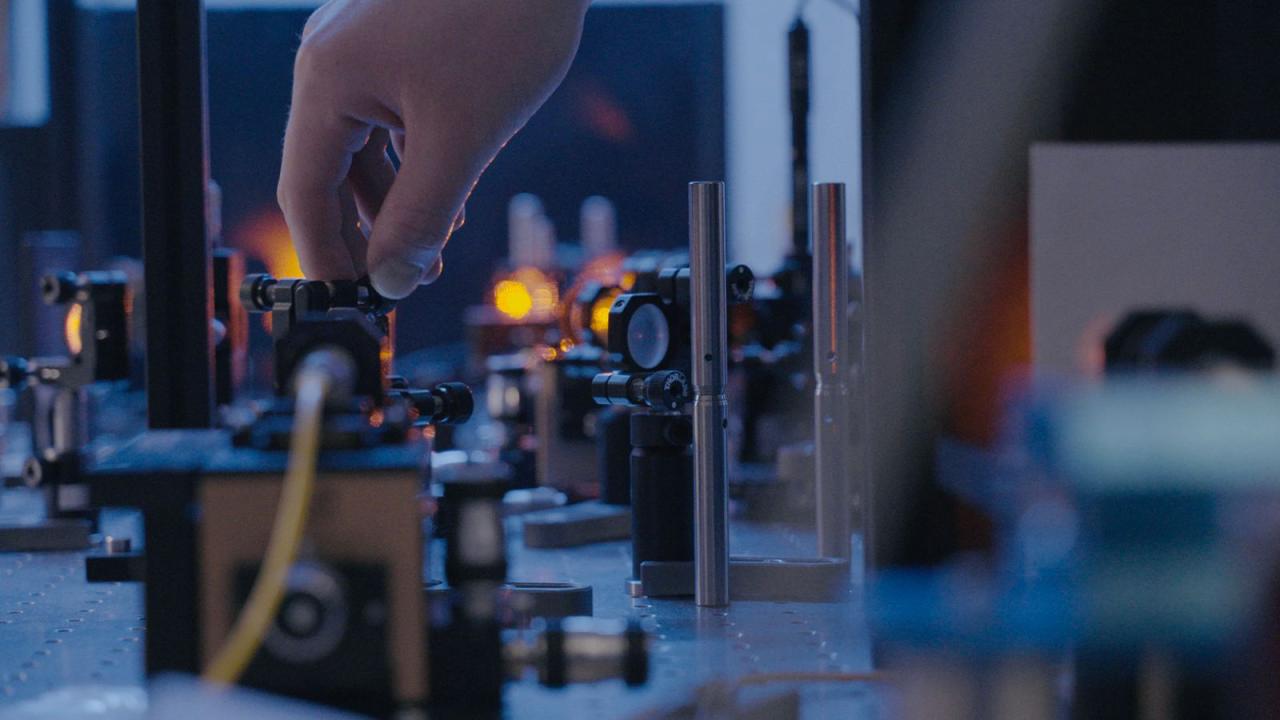As the world races toward clean energy solutions, one of the greatest challenges remains the efficient and sustainable storage of electricity. Traditional lithium ion batteries, though widely used, come with environmental and supply chain concerns. In response, scientists have turned to innovative approaches one of the most promising being the newly introduced Quantum “Water Battery”. This revolutionary development has the potential to transform the global energy storage landscape by using safe, abundant, and eco friendly materials while leveraging quantum principles.
In this comprehensive article, we will explore what the quantum water battery is, how it works, the underlying science, its applications, potential advantages, environmental impact, and its role in shaping the future of sustainable energy storage.
A. Understanding the Quantum Water Battery
The quantum water battery is a new type of energy storage device that uses water as a primary medium and integrates quantum mechanical principles for energy transfer and storage. Unlike conventional batteries that rely on toxic or limited resources like cobalt and lithium, this technology harnesses the properties of water molecules in combination with nanomaterials and quantum chemistry to create a safer and more efficient battery system.
A.1. What Makes It “Quantum”?
Quantum batteries utilize quantum states—such as superposition and entanglement—to enhance charging dynamics and energy retention. In a water battery, quantum principles are used to manipulate electron transfers at the molecular level, potentially enabling faster charging and higher storage capacity.
A.2. What Makes It “Water Based”?
Instead of flammable organic solvents or rare metals, this battery uses aqueous electrolytes—solutions primarily made of water combined with salts and nanostructured electrodes. This makes the battery more environmentally friendly, cost effective, and easier to recycle.
B. How the Quantum Water Battery Works
The structure of a quantum water battery involves several key components:
B.1. Electrodes
These are often composed of nanomaterials such as graphene, carbon nanotubes, or metal oxides. The electrodes are designed to interact at the quantum level with the ions in the electrolyte.
B.2. Aqueous Electrolyte
Water serves as the base solvent, and it is enhanced with salts like potassium, zinc, or manganese sulfates. These solutions allow for the efficient movement of ions without the fire risks associated with lithium ion counterparts.
B.3. Quantum Charging Mechanism
Unlike traditional batteries where electrons travel through chemical reactions over time, quantum batteries may leverage quantum tunneling and superposition states to enable ultra fast charging. Research suggests that when multiple battery units are entangled, the charging rate may increase exponentially an advantage that could drastically improve grid scale energy storage.
C. Advantages Over Traditional Batteries
Quantum water batteries offer several promising benefits that could redefine the energy storage sector:
C.1. Safety
-
No flammable components mean no risk of explosion or fire.
-
Water based electrolytes operate safely at room temperature.
C.2. Environmental Sustainability
-
No rare earth metals are needed, reducing the impact of mining.
-
Water is abundant and non toxic.
-
Easier to recycle and dispose of than lithium ion batteries.
C.3. Lower Cost
-
Materials like water and zinc are significantly cheaper than lithium or cobalt.
-
Production processes are less energy intensive.
C.4. Faster Charging
-
Quantum entanglement and tunneling could enable much faster charging rates.
-
Ideal for grid energy balancing and peak demand management.
C.5. Long Term Durability
-
Early testing shows water based batteries may handle more charge discharge cycles without significant degradation.
D. Scientific Breakthroughs Behind the Technology
 quantum battery, water battery, sustainable energy storage, quantum technology
quantum battery, water battery, sustainable energy storage, quantum technology
The success of the quantum water battery is built on multiple scientific advances:
D.1. Quantum Thermodynamics
This branch of physics studies how quantum systems exchange heat and energy. Understanding these laws helps improve battery charging and discharge efficiency.
D.2. Advanced Nanotechnology
By engineering materials at the nanoscale, scientists have created electrodes that facilitate more efficient interactions with ions in the electrolyte.
D.3. Quantum Entanglement
In theory, entangled states could allow multiple battery units to be charged simultaneously in a synchronized way, drastically improving charging times.
D.4. Supercapacitive Behavior
Some water batteries mimic the behavior of supercapacitors, providing rapid bursts of energy when needed while maintaining stable long term output.
E. Practical Applications
As the technology matures, quantum water batteries are expected to play a major role in a wide range of industries:
E.1. Grid Scale Energy Storage
-
Stabilize renewable energy sources like solar and wind.
-
Enable energy storage during off peak hours for use during peak demand.
E.2. Electric Vehicles (EVs)
-
Could dramatically reduce EV charging times.
-
Provide safer, cooler, and more sustainable battery systems.
E.3. Consumer Electronics
-
Phones, laptops, and wearables could benefit from ultra fast charging and improved safety.
E.4. Smart Homes and IoT
-
Efficient storage for decentralized energy systems like rooftop solar panels.
-
Safe, compact batteries for connected home devices.
E.5. Emergency and Backup Systems
-
Hospitals, data centers, and military installations can use water batteries for stable, long duration backup power.
F. Environmental Impact
One of the most compelling aspects of the quantum water battery is its minimal environmental footprint. Here’s how it compares to conventional batteries:
F.1. Mining and Resource Depletion
-
Lithium mining is water intensive and environmentally destructive.
-
Cobalt extraction is often unethical and pollutes ecosystems.
-
Quantum water batteries avoid both issues by using benign materials.
F.2. Recycling and Disposal
-
Aqueous batteries are easier to dismantle and recycle.
-
Their materials pose fewer toxic risks during disposal.
F.3. Carbon Emissions
-
Production and usage involve less energy and emit fewer greenhouse gases.
-
Facilitates broader adoption of zero emission energy solutions.
G. Challenges and Limitations
Despite its potential, the quantum water battery still faces hurdles before widespread adoption:
G.1. Commercial Viability
-
Many prototypes are still in lab testing phases.
-
Mass production methods need to be scaled up and optimized.
G.2. Energy Density
-
Some water batteries may have lower energy densities than lithium ion alternatives, making them bulkier for the same power output.
G.3. Regulatory Approval
-
New battery chemistries need certification and standardization for safety and reliability.
G.4. Public Awareness and Trust
-
Consumers may be slow to adopt new technologies without proven track records.
-
Education and transparency will be key.
H. Leading Innovators and Research Institutions

Several companies and academic institutions are pioneering this technology:
H.1. University Collaborations
-
MIT, Stanford, and ETH Zurich have made significant contributions to quantum battery theory and aqueous electrolyte research.
H.2. Private Sector
-
Startups in clean tech are exploring quantum water batteries for grid storage.
-
Companies like EnergyX and Blue Solutions are investing in advanced battery solutions using non lithium systems.
H.3. Government Involvement
-
The U.S. Department of Energy and European Union have funded research into quantum energy storage and alternative battery technologies.
I. Future Outlook
The quantum water battery represents a significant step forward in the global transition to sustainable energy systems. In the coming years, we can expect:
I.1. Commercial Pilots
-
More real world testing at wind and solar farms.
-
Collaborations with automakers to integrate into EVs.
I.2. Integration with Smart Grids
-
AI managed power systems can dynamically switch between solar, wind, and battery storage.
I.3. Global Adoption
-
Especially impactful for regions with unreliable power grids or limited access to lithium resources.
I.4. Hybrid Systems
-
Combining quantum water batteries with other clean tech, like hydrogen or flywheel storage, for all encompassing energy ecosystems.
The unveiling of the Quantum Water Battery marks a turning point in sustainable energy innovation. With its blend of quantum technology and environmentally safe materials, this battery could redefine how we store and use power replacing polluting, resource intensive alternatives with clean, efficient solutions. Although still in its early stages, the potential for revolutionizing energy storage on a global scale is undeniable. As we move toward a net zero future, breakthroughs like this will be essential in creating a greener, safer, and more technologically advanced world.












